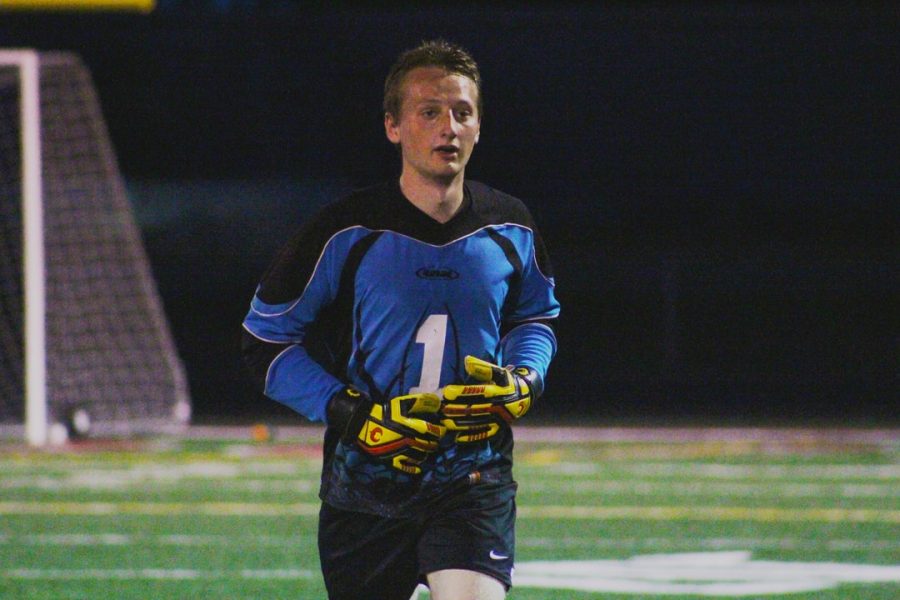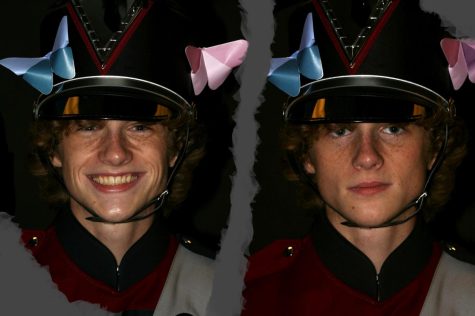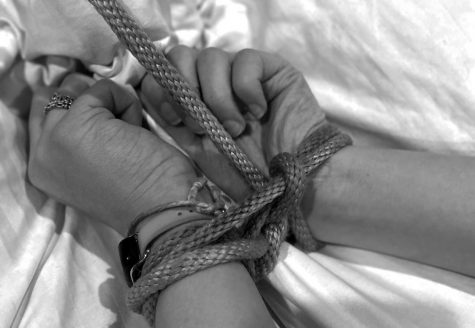Pulling the Plug
In every sport, there are pivotal positions that all teams have, but when that player isn’t playing to their caliber, knowing when the right time to take them out is vital for the success of the team.
Coaching sports requires one to know who the right people are to have in the game at every moment. Balancing talent with energy takes almost as much skill and experience for a coach as playing the sport itself does for an athlete. Each sport has specialized positions that few players can fill. In field hockey and soccer, that position is the goalkeeper. In volleyball, the libero fulfills this role. The most prevalent example of specialized positions however, occurs in softball and baseball, where the pitcher has the most unique and specialized job on the team. Of course, even the most elite athletes are human and can make mistakes. That is to be expected in sports. A goalie can misjudge an easy ball, giving up a goal. A libero may miss an easy pass, giving up a point they should have had. A pitcher could misplace the ball, giving up a homerun or a base hit in the process.
Every player has bad games sometimes and that’s to be expected in all athletes, from little leaguers to the professionals. There’s nothing wrong with an athlete being a little off their game; that’s what backup players are for. However, when it comes to these specialized positions, there’s a lot more riding on their success. These positions are specific to the sport, unable to be filled by a random player on the bench.
Goalies, liberos and pitchers go through their own specific training, rarely doing the same offensive and defensive drills as their teammates, so when it comes time for one of these players not performing to the best of their abilities, it’s not as easy to throw any player into their spot. Coaches have to be a little more lenient with their decision process on whether or not to pull these players, knowing that putting in a replacement may not lead to as much success on the field.
“I’ve pulled goalies due to a lack of judgement, a couple bad plays, seeing something that they’re doing consistently wrong or I just see that the goalie has gotten into their own head and their struggling,” math teacher and varsity boys soccer coach Michael McDermott said. “I look at them as a player and as a person, and I look out for their well being.”
Being a goalkeeper in soccer is just as much a physical game as it is a mental one. Keepers must have a short memory. If they let in an easy goal, they need to move on and focus on the game in the present, instead of in the past. That can be hard for some players though. This leads to the player getting in their own head, causing them to struggle.
It’s hard for the goalie not to put the blame on themselves when something goes wrong. They’re the last line of defense and if they make a critical error, it could completely shift the momentum of the game. Seeing the other goalie waiting to be substituted can be crushing to the keeper, so the words the coach says after the switch are crucial for the pulled keeper’s confidence.
“A couple things I could say are ‘you got to have a short term memory,’ ‘everyone has an off day’ or you can even ask them if they’re doing okay personally,” McDermott said. “You can make that connection as both a soccer coach and a life coach.”
Of course, soccer is not the only sport with goaltenders. Even with field hockey’s recent successes on the field, there have still been times when the goalies have struggled.
“I was pulled from a game one time last year when we were in Saint Louis for a tournament,” senior varsity field hockey goalie Zoё Semersky said. “I believe it was due to the fact that there were too many goals being scored.”
Just as in soccer, the feeling of being pulled can be aggravating to goalies but in Semersky’s case, she was able to see the bigger picture.
“I was a little upset at first,” Semersky said. “But I realized, for the good of the team, it was probably necessary to have someone else in goal for at time.”
The parallels between soccer and field hockey continue with how the coach communicates with the benched goalie after the switch.
“Same as if I pull any athletes off the field,” varsity field hockey coach and math teacher Terry Dewing said. “If something’s going wrong, you have to explain that to them so they can learn from that situation and hopefully not make the same mistake again.”
It’s not only up to the coach to save the confidence of a struggling goalkeeper, the teammates also need to communicate that everything will be alright.
“They’re usually saying things along the lines of ‘don’t worry, we got this,’ and ‘we’ll pick it up, we can do this’,” Semersky said. “That makes me feel good about myself.”
For Semersky, experiences like the one in Saint Louis have helped her to become the athlete she is today. With six shutouts on the season, Semersky looks back at that game as a big help in getting her to where she is today.
In other sports like volleyball, the issues that lead to the special player being pulled aren’t so black and white, and coach’s discretion is a much bigger factor than it is in soccer or field hockey.
“Sometimes in a close match, people will go after a certain player who has maybe missed a ball or two,” special education teacher and varsity boys volleyball coach Jamie Atkinson said. “We had another team go after our libero with serves, and the libero got in their head. To keep him from self destructing, I removed the libero during those few points.”
Senior libero Nicholas Gagnon has been in this situation before.
“All my passes were going over the net, and they weren’t staying on our side,” Gagnon said. “I felt like I let my team down at that point, but it’s not all bad because you know that you have someone that’s there to back you up.”
There is no other sport where pulling special players from their position occurs more frequently than baseball and softball. It is rare for a pitcher to go the distance and throw a complete game. Typically, fatigue catches up and forces the coach’s hand but there are other reasons for pulling a pitcher.
“I’ve had to pull pitchers both when they’ve been playing well and when they’ve been struggling,” freshman baseball coach and special education teacher Francis Fracek said. “When a pitcher is doing well, you can pull them for confidence reasons, leaving them with something to build off of for their next start. Obviously it’s very common to pull a pitcher when they start to show signs of struggling or the opponent is hitting them pretty well.”
Not only is confidence a concern when it comes to leaving pitchers in a game, but the time of year can also play into effect.
“Early on in the season, I don’t like to have the pitchers throw heavily,” Fracek said. “With our program here at Antioch we try to limit our pitchers throughout the season. At the start of the year, our guys aren’t really throwing nearly as much as they are by the end of the year. Our goal is to have them hit their hundred pitch mark by the summer, so as coaches we have to be very cautious with how often we’re throwing them because it can do a lot of damage to their arm if we’re not careful.”
Pitchers typically have a much better understanding of the strategy after their time pitching is done.
“[When I got pulled] I wasn’t finding the strike zone as much as I usually would,” sophomore pitcher Aidan Trusky said. “I felt angry, but I realized it was better for the team.”
Similar issues occur in softball, too. Typically pitchers are pulled after command and speed are lost and they aren’t throwing strikes anymore or they are giving up a lot more contact.
Many unlikely trends can arise between sports. When it comes to pulling players from these specialized positions, one trend is very common: Being pulled isn’t solely to benefit the team, it’s to protect the player, too. In every sport, when a player is pulled due to performance issues the coaches keep the confidence and wellbeing of the player in mind. Sometimes, it takes the worst experiences to bring out the best in athletes.








![The Black Lives Matter movement has become a growing trend in recent years. Everything people post on Instagram and everything [related to] politics is a trend now sophomore Kelsey Aviles said. Despite how serious of a topic it is, some individuals post about BLM specifically because it is trendy.](https://www.sequoitmedia.com/wp-content/uploads/2020/12/Untitled-Artwork-3-475x168.jpg)



